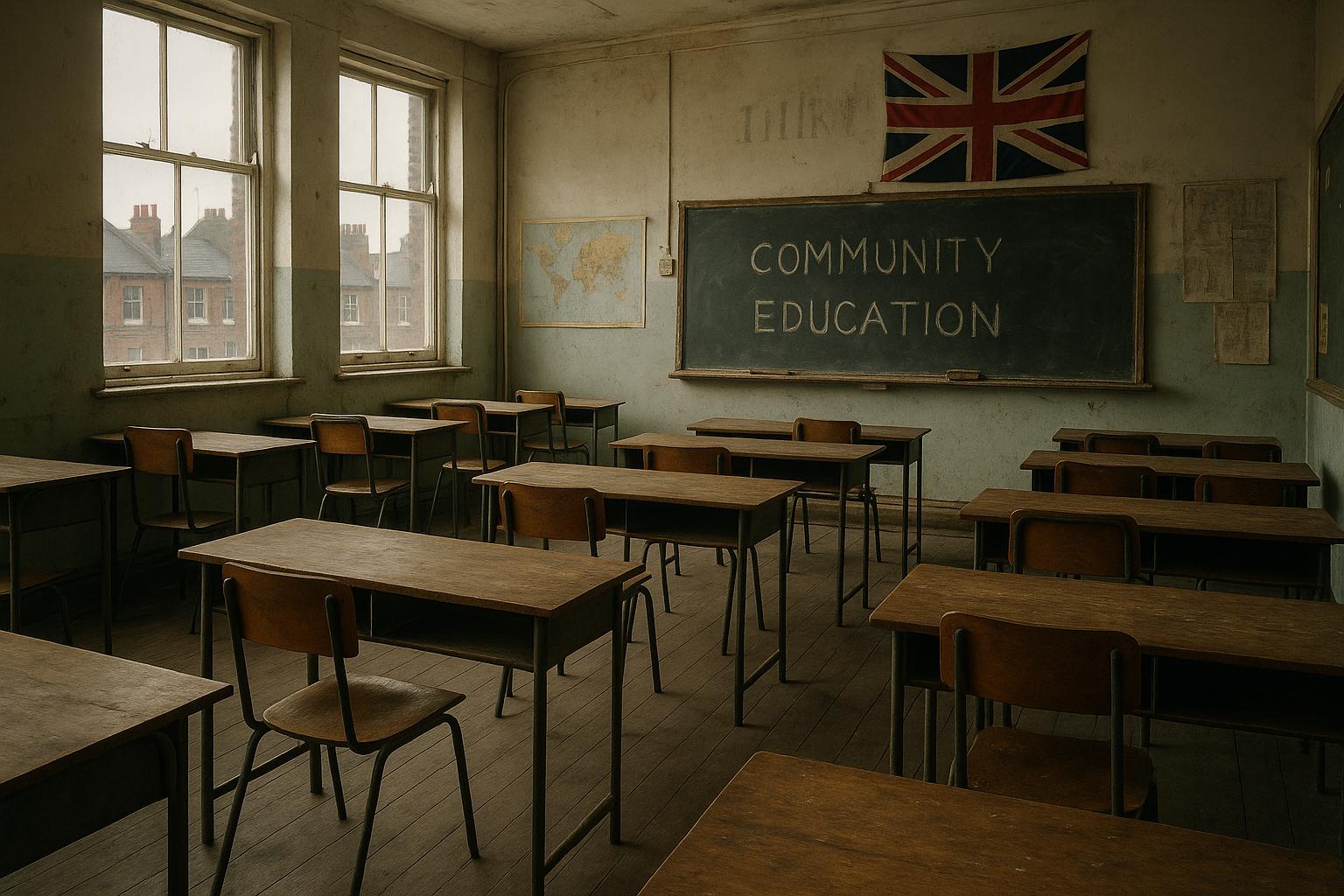A sharp drop in pupil numbers across London's primary schools, particularly in boroughs like Westminster and Lambeth, highlights urgent funding and demographic challenges exacerbated by government inertia, risking the future of community education services.
London’s primary schools are facing a concerning exodus of pupils, with numbers dropping nearly twice as fast as the rest of England, according to a report partially funded by the well-connected Nuffield Foundation. Since 2018-19, enrolments in the capital have fallen by an 8.1% margin, equivalent to around 2,060 classes vanishing, highlighting a structural decline driven largely by families fleeing high living costs and limited childcare options. Yet, rather than tackling these root causes, the government persists with a delay in reforming funding policies, leaving schools stranded in financial limbo just as they grapple with these demographic shifts.
In boroughs such as Westminster, Southwark, Camden, and Lambeth, the decline is especially sharp, with pupil numbers dropping over 10% in recent years. Westminster itself has faced a near 16% decrease since 2020/21, numbers that threaten the remaining schools' viability. Forecasts from the Education Policy Institute warn of approximately 52,000 fewer primary-aged children in London by 2028, an alarming trend ignored by a government more focused on political posturing than meaningful intervention.
Despite the shrinking pupil rolls, London’s schools are refusing to downsize their class sizes in any meaningful way. Instead, they are cutting the number of classes, risking cuts to the quality of education just to keep budgets afloat. With funding still tied to pupil numbers, the revenue loss from declining enrolments is pushing many schools dangerously close to financial deficits. This financial squeeze is compounded by the rising costs of supporting children with special educational needs and disabilities, stretching budgets even thinner.
Meanwhile, the government’s delay in reforming funding arrangements until next January exemplifies its complacency, delaying essential support and leaving schools to face an uncertain future. Such inertia hampers efforts to adapt and threatens the survival of many community schools that are already under immense pressure.
Admissions data reflect these hardships. Over 10,000 London children failed to secure a place at their first-choice school this year, as demographic shifts and parental fears of ongoing economic hardship reshape enrolment patterns. Surplus capacity is particularly stark in Westminster, where over a quarter of primary places sit vacant, raising alarms about impending budget deficits and broader council financial struggles.
This downward spiral, fewer pupils, rising costs, and governmental inertia, exposes the flawed priorities of a government content to ignore the decline and the needs of ordinary families. With declining demand forecasted to continue through 2027/28, the question remains: are policymakers prepared to genuinely support London’s schools and tackle the root causes of this exodus, or will they let the crisis deepen, further undermining the future of children’s education? The time for meaningful action is long overdue.
Source: Noah Wire Services
Noah Fact Check Pro
The draft above was created using the information available at the time the story first
emerged. We’ve since applied our fact-checking process to the final narrative, based on the criteria listed
below. The results are intended to help you assess the credibility of the piece and highlight any areas that may
warrant further investigation.
Freshness check
Score:
8
Notes:
The narrative is recent, published on November 7, 2025. It references a report funded by the Nuffield Foundation, indicating a high freshness score. However, similar reports have been published in the past, such as one by London Councils on January 29, 2024, forecasting a 4.4% decline in reception pupil numbers over four years. ([londoncouncils.gov.uk](https://www.londoncouncils.gov.uk/news-and-press-releases/2024/schools-facing-disruption-and-impossible-choices-london-experiences?utm_source=openai)) This suggests that while the specific data may be new, the underlying issue has been ongoing. Additionally, the narrative mentions a 16% decrease in Westminster since 2020/21, aligning with findings from the Education Policy Institute, which reported a 15.9% decrease in Westminster from 2020/21 to 2024/25. ([epi.org.uk](https://epi.org.uk/publications-and-research/so-long-london-an-analysis-of-london-primary-pupil-movements/?utm_source=openai)) This consistency indicates that the narrative is not entirely original. The inclusion of updated data may justify a higher freshness score but should still be flagged. ([standard.co.uk](https://www.standard.co.uk/news/politics/pupil-numbers-dropping-london-classrooms-schools-uk-england-school-places-b1256901.html?utm_source=openai))
Quotes check
Score:
7
Notes:
The narrative includes direct quotes, such as Amber Dellar's statement: 'The government has big ambitions to improve schools, but a budget that falls short of matching them.' A search reveals that this quote appears in the November 7, 2025, publication of The Standard. No earlier instances of this exact quote were found, suggesting it may be original. However, the lack of earlier appearances raises the possibility of exclusive content.
Source reliability
Score:
8
Notes:
The narrative originates from The Standard, a reputable UK newspaper. The report cites a study funded by the Nuffield Foundation, a well-known educational charity. This association with reputable organisations strengthens the reliability of the information presented.
Plausability check
Score:
7
Notes:
The narrative presents a plausible scenario of declining pupil numbers in London primary schools, supported by data from reputable sources. The Education Policy Institute's report indicates that nine out of the ten local authorities with the largest declines in primary pupil numbers are in London, with Westminster experiencing a 15.9% decrease from 2020/21 to 2024/25. ([epi.org.uk](https://epi.org.uk/publications-and-research/so-long-london-an-analysis-of-london-primary-pupil-movements/?utm_source=openai)) The narrative also mentions a 16% decrease in Westminster since 2020/21, aligning with this data. The discussion of factors such as falling birth rates and families moving out of the city due to high living costs and limited childcare options is consistent with known demographic trends. However, the narrative's tone and language may require further scrutiny to ensure consistency with typical journalistic standards.
Overall assessment
Verdict (FAIL, OPEN, PASS): OPEN
Confidence (LOW, MEDIUM, HIGH): MEDIUM
Summary:
The narrative presents recent data on declining pupil numbers in London primary schools, citing reputable sources like the Education Policy Institute and the Nuffield Foundation. While the information is plausible and the sources are reliable, the narrative's originality is questionable due to similarities with previous reports and the lack of earlier appearances of direct quotes. The tone and language used may also require further scrutiny to ensure consistency with typical journalistic standards.
